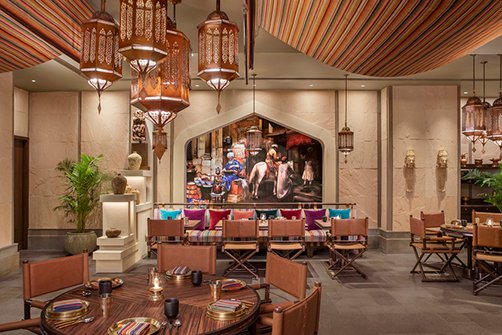It’s a dizzy mix of helicopter rides, Caipirinhas, colourful Carnivals, jungle trails and sexy sunsets.
Brazil’s most famous city mixes golden coastlines, sprawling jungle, mountainous skylines and a diverse metropolis like no other in the world. By Sarah Brown
Rio is a city incomparable to others. It’s edged by a world-famous coastline that ranges from the bustling beaches of Copacabana and Ipanema to the wild, untouched shores in the west.
It’s a huge metropolis with a population of over six million, yet its size easily goes unnoticed thanks to the hilly skyline that separates neighbourhoods and the surrounding jungle that sprawls throughout the city.

Escadaria Selarón, also known as the ‘Selaron Steps’, a set of world-famous steps
Beyond its surface beauty exists a diverse culture influenced by the many nations that have settled in Rio over the last few centuries, resulting in food and entertainment you won’t find anywhere else. It’s a musical city and as you walk down any street, your steps will be accompanied by the beat of samba or the rift of some Carioca Funk. There’s so much to explore that it’s hard to know where to start. A good place, though, is up in the air.
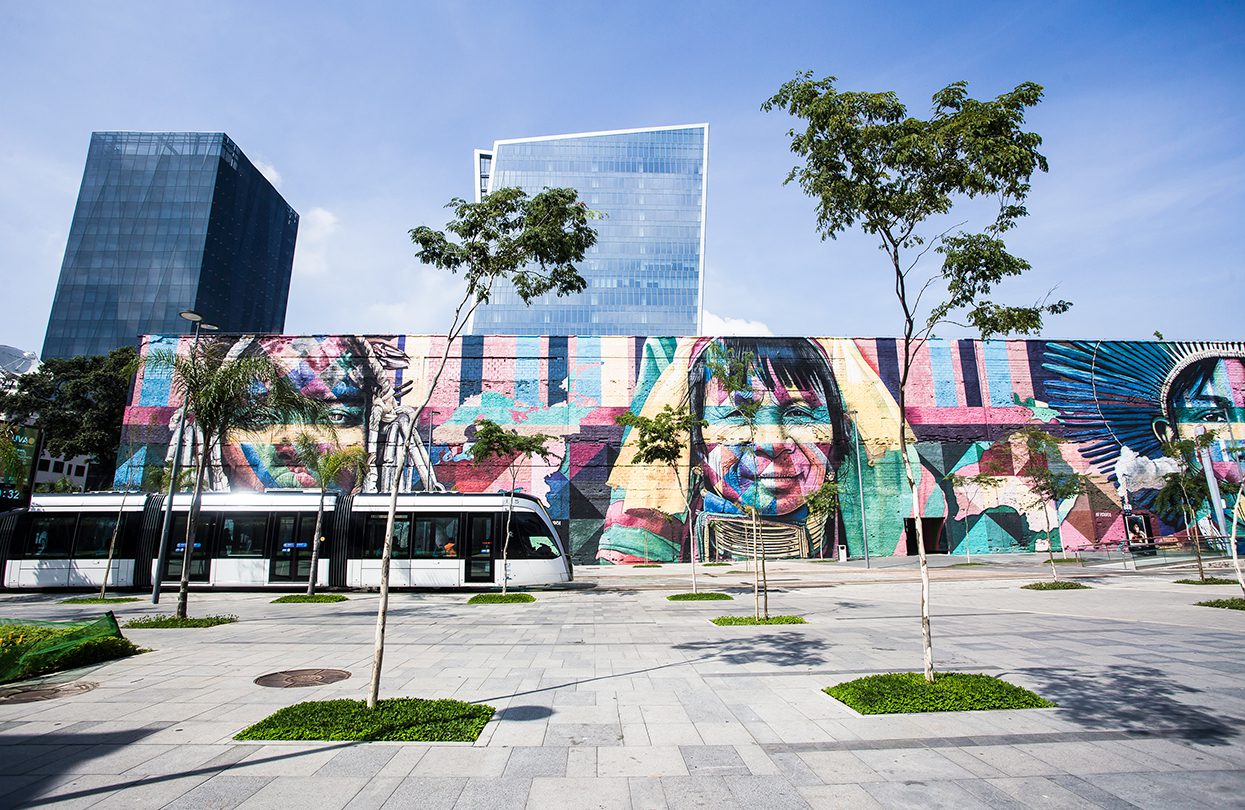
Grafitti around Pier Maua area
A helicopter ride is one of the best ways to take in just how breathtakingly beautiful Rio is. “We get people from all over the world taking our tours,” says Filipe Morais, pilot and owner of Riocopter tours. “And I always hear the same thing. People say they’ve already done helicopter rides in many places, but there is no other place as beautiful as Rio.”

People celebrating carnival on the streets of Ipanema J By Joao Paulo V Tinoco
The tour lasts up to one hour and includes many of Rio’s picture-perfect spots. You’ll fly over the famous Christ the Redeemer, the Sugarloaf mountain and the Tijuca forest, the largest urban jungle in the world. You’ll also get a glimpse of Rocinha, Brazil’s biggest favela, and a bird’s-eye view of Rio’s many beaches, including Copacabana, Leblon and Ipanema in the south and Joatinga, Prainhaand Grumari in the west.
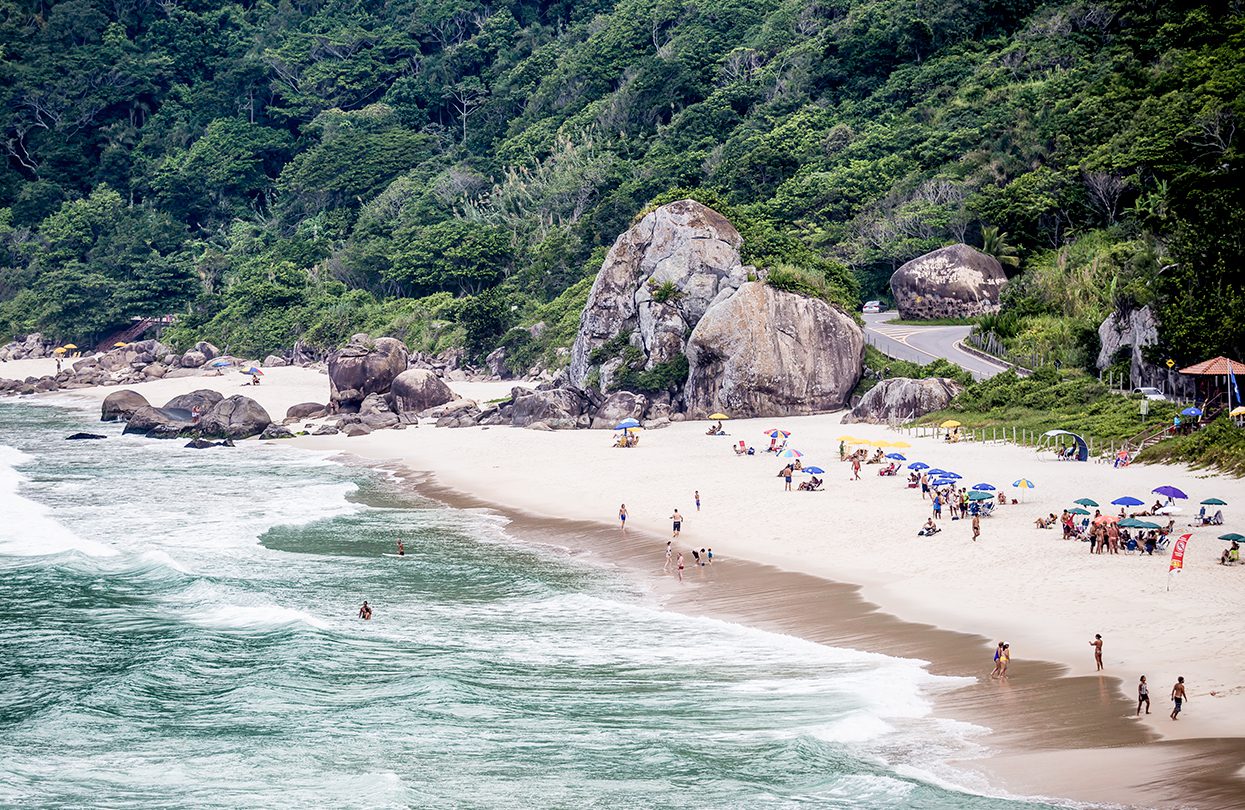
Prainha beach
“It’s the only way to get an aerial perspective of Rio,” adds Morais. “A helicopter tour shows you Rio’s size and beauty in a different way. People who see it only from the ground don’t really see Rio. In a helicopter, you see the bigger picture.”
After seeing Rio from up high, you’ll be itching to get to one of those beaches. The famous beaches of Copacabana and Ipanema are a whirl of activity with beach vendors patrolling up and down selling various food and drinks, locals topping up their bronzed glows, groups of young boys playing football, and surfers bobbing in the sea waiting to catch the next perfect wave. For a quieter experience, take taxi to the west zone of Rio and enjoy the less-frequented shores of Recreio, Grumari, and Prainha. Set against a backdrop of forest without the big city behind, they seem wild, untouched and a world apart from the urban rush.

Tom Jobim Statue at Ipanema Beach, photo By Joao Paulo V Tinoco
Head as far west as Guaratiba to eat fresh catches of the day against a sea view backdrop at Bira de Guaratiba, a well-known seafood restaurant that is worth the hour-taxi ride from Copacabana. Just one block away, you can stand-up paddle in the mangroves where saltwater canals wind through the twisted roots of dense, submerged trees. As your board glides over the still waters, you may spot marine turtles who take refuge there from the ocean currents.

Aprazivel in the hillside of Santa Teresa
With mountainous skylines and irresistible beaches, shopping in Rio isn’t immediately obvious. Unlike the big cities across Europe, the States and Asia, Rio doesn’t have a main high street lined with big-name stores; instead, the international brands cluster together in large shopping malls, such as Shopping Leblon and Rio Shopping Sul, while the boutique local brands dot the streets in the city’s South Zone neighbourhoods.
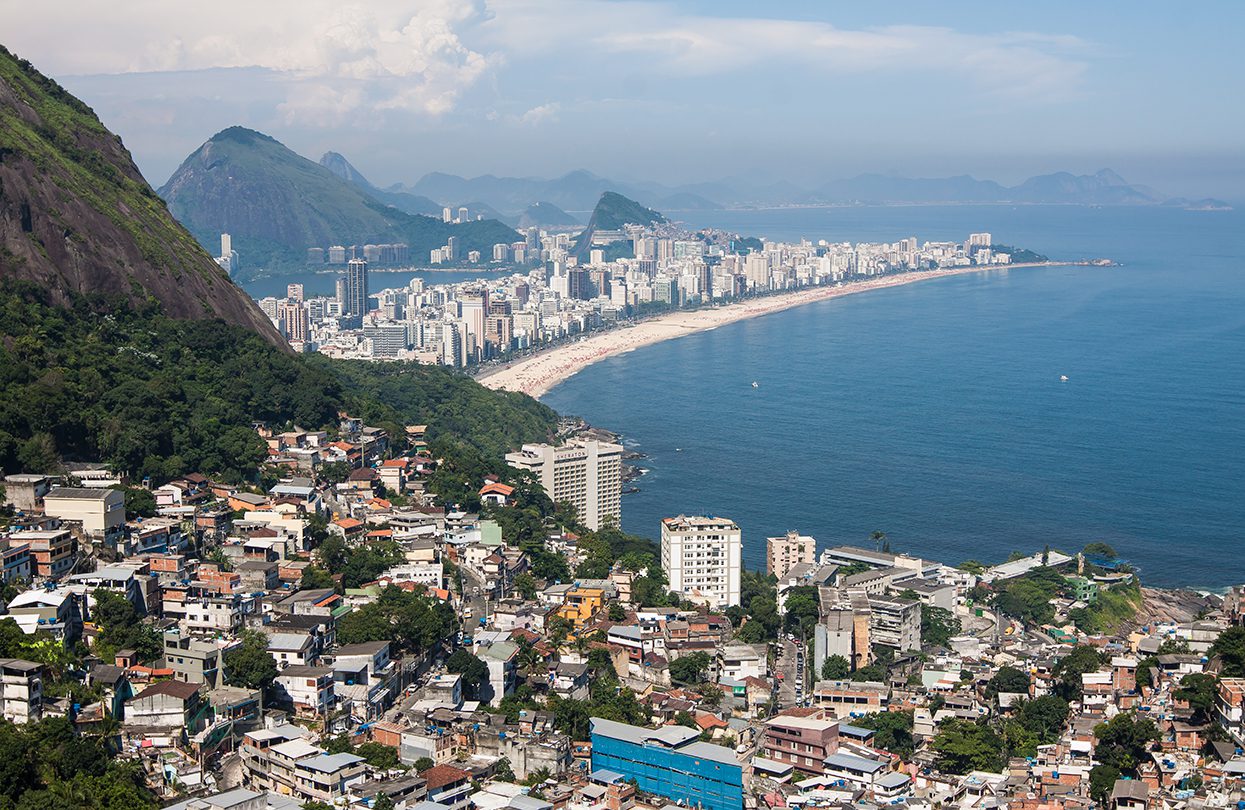
View over Vidigal & Ipanema from Bar da Laje
“My absolute favourite place to go shopping in Rio is Ipanema,” says Lauren Quinn, the creative director and founder of Bromelia Swimwear whose line is designed and produced in Brazil. “Why? Because you have outdoor shopping that creates a unique atmosphere that feels very tropical.”
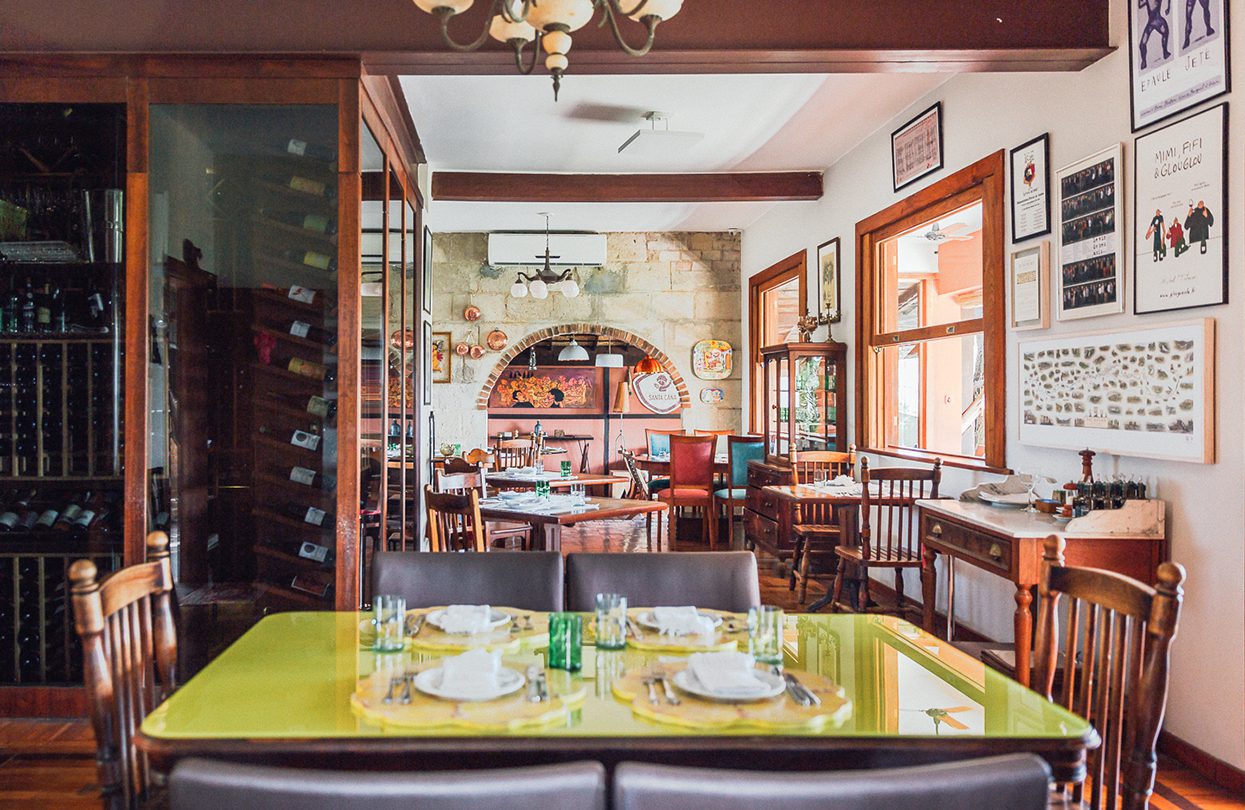
Aprazivel interior

Aprazivel’s dining area
According to Lauren, Rio has a distinct style that is hard to find anywhere else in the world. It uses bright colours such as yellows, deep blues, bright pinks, and reds, with patterns inspired by its surroundings, like parrots, toucans, and foliage.
“Rio is all about the vibrancy and incorporating nature when it can. It’s about the colours and patterns, which aren’t as common in Europe or the States, for example,” says Lauren. “This really encompasses the essence of Brazilian design. That goes for clothes and interior design. Any piece you buy in Rio feels like you can’t buy it anywhere else in the world.”

Cacoa fruit
In Ipanema, you can also get a taste for local flavour, depending on what you fancy. For something sweet, we can’t resist Chocolate Q, a high-end, award-winning chocolate maker with bars shaped by the late Brazilian architect, Oscar Niemeyer. The range is created by cacao beans sustainably grown in Brazil and packaged with colourful designs of Brazilian foliage and wildlife.
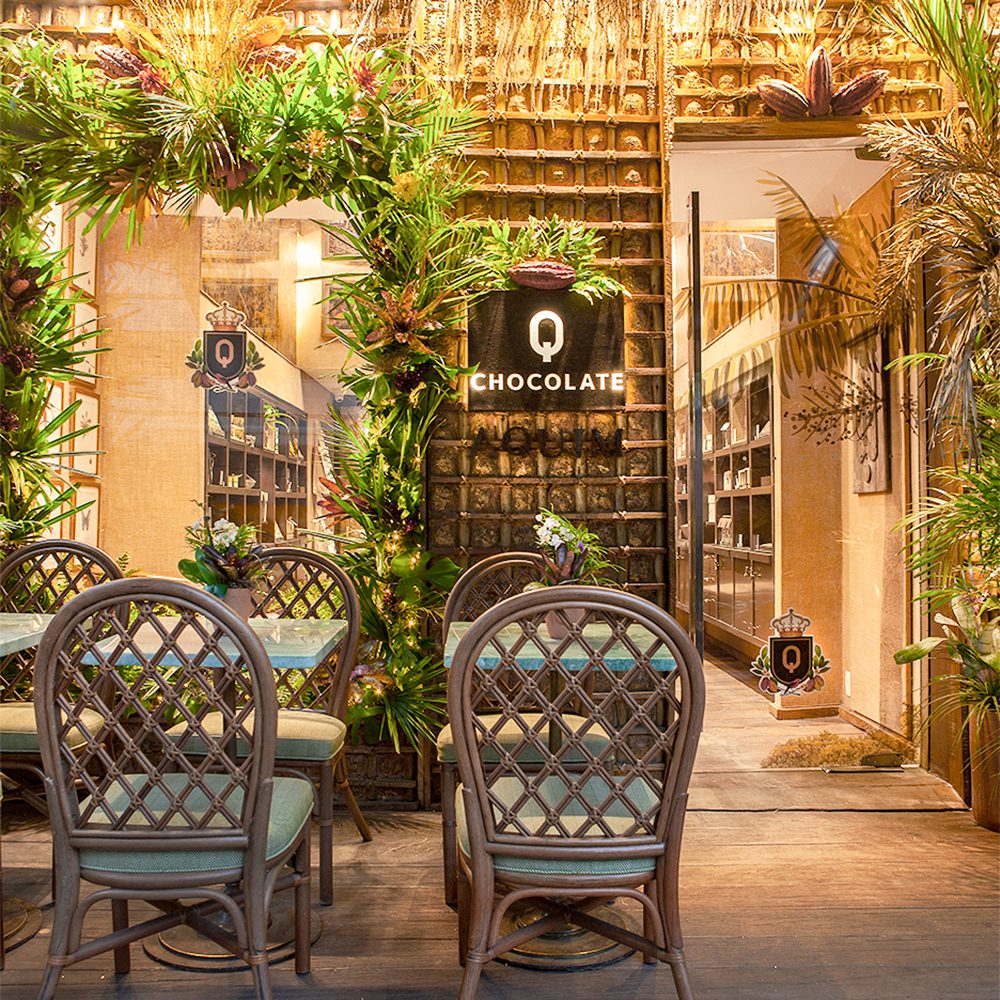
Chocolate Q interior
The best restaurants for Brazilian cuisine are dotted throughout the South Zone. When in Brazil, thechurrasco (Brazilian barbeque) is a must. Enjoy a non-stop stream of fine cuts of meat on skewers and a buffet of salads at Assador Rio’s in Aterro do Flamengo park, where its floor-to-ceiling glass walls afford unforgettable views of Guanabara Bay and the Sugarloaf mountain.

Chocolate Q store
Another place that blends good food with stunning views is Aprazível in Santa Teresa, one of Rio’s oldest and highest neighbourhoods and home to the first Portuguese settlers more than 500 years ago. Clinging to the hillside, Aprazível comprises an intimate dining space with wooden walls, opening up to a panoramic view over the city. The food is distinctly Brazilian and focuses on accentuating the various influences that you find in Brazil, says head chef Ana Castilho.
“The type of food you’ll find at Aprazível is real, authentic food that’s packed with flavour. The fresh, organic ingredients symbolise the diversity in Brazil, with tastes from Africa, Europe, and the country’s indigenous history,” says Ana.

Roasted heart of palm at Aprazivel
The menu takes traditional recipes and puts a distinct Brazilian stamp on it, such as guacamole made with cashew fruit and acai, products that are typically from Brazil.
“The tucupi [broth made of mandioca] we have, is an indigenous food. I think it’s beautiful how the indigenous, through ancestral wisdom, were able to make a broth with such incredible depths of flavours. Here we have tucupi with scallops or squids, which is an authentic taste from Brazil.”
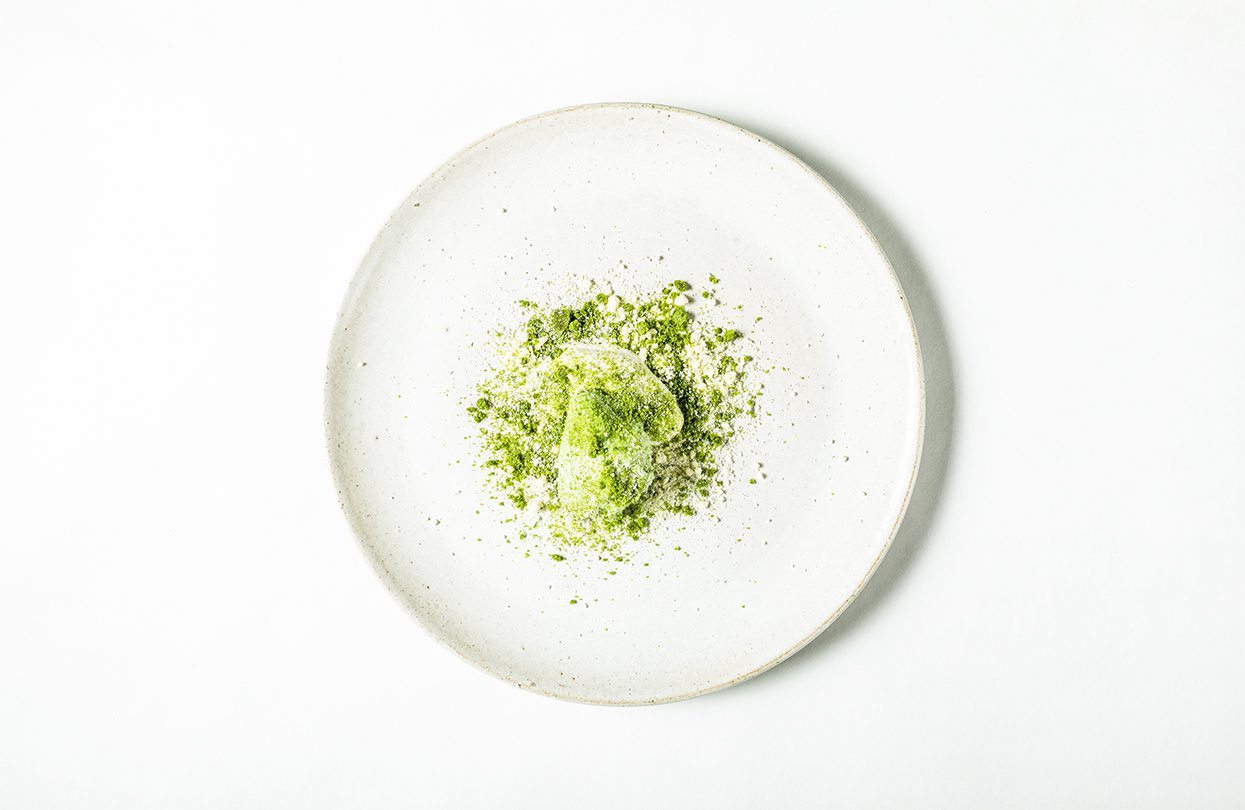
Cuisine at Lasai
For a Michelin-star experience, head to Lasai, an award-winning restaurant in the heart of Botafogo. The restaurant offers two tasting menus, with the largest showcasing 14 different courses. The menu constantly changes and Rafa Costa e Silva, head chef and owner, reveals that they never have anything on the menu for more than three weeks.
“We use a lot of our ingredients from our own garden and from the local organic markets,” says Rafa. “The menu includes fish, meat and plenty of Brazilian flavours. We make the menu weekly depending on what we can harvest from our garden or find at the markets.”

Dining area at Lasai
“Brazilian food is typically heavy with lots of fried food,” he adds. “We try to use Brazilian ingredients and flavours, but much lighter and easier to eat. You finish the 14 courses without feeling really full. It’s a way of experiencing Rio in a different way.”

Lasai’s chef and owner, Rafe Costa e Silva
After all this delicious food, there are two excellent ways to burn it off – walking or dancing. If you love hiking, then you’re in for a treat. Rio is home to the Transcarioca Trail, a 180km trail that winds through the Tijuca forest, alongside golden beaches and finishes at the iconic Sugarloaf mountain. It’s divided into 25 sections, allowing you to explore parts at a time. Each section offers something different from long paths that are seldom trodden to secret trails that lead you to empty beaches such as Praia Funda or Praia do Meio.
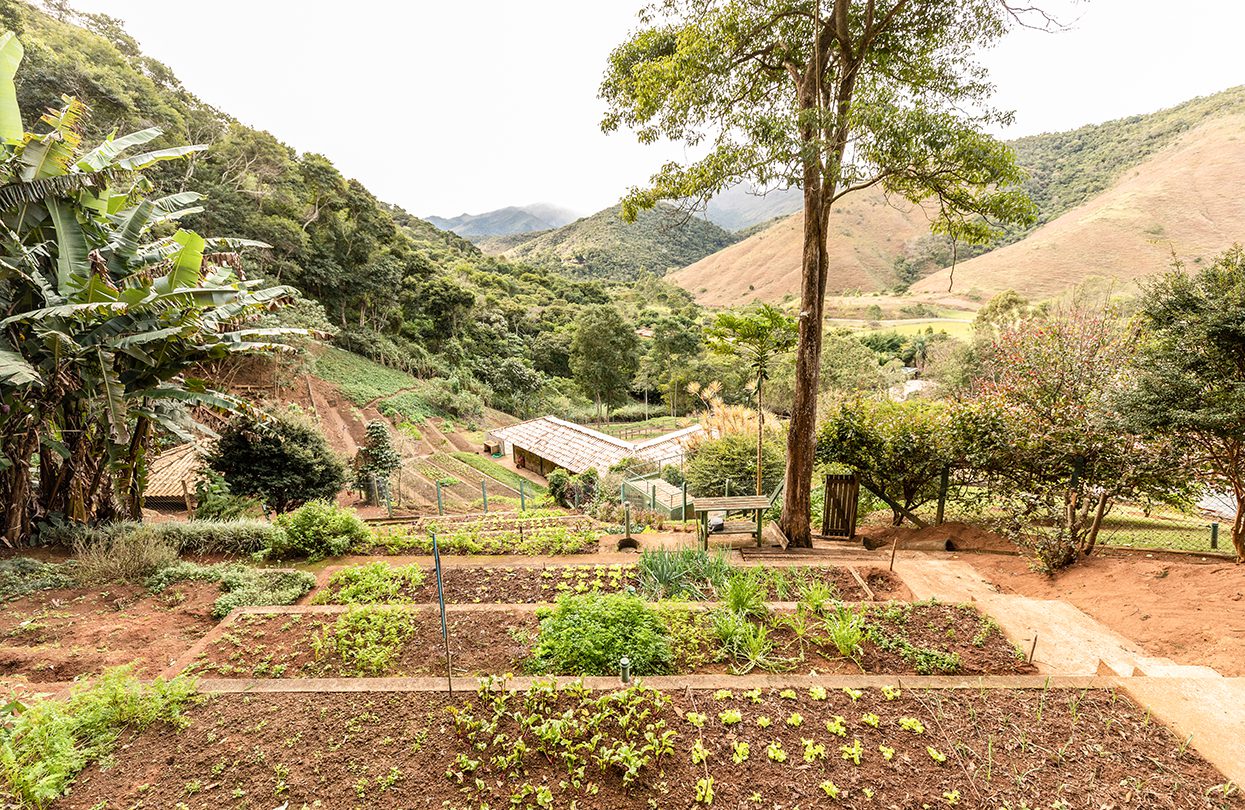
Lasai’s gardens
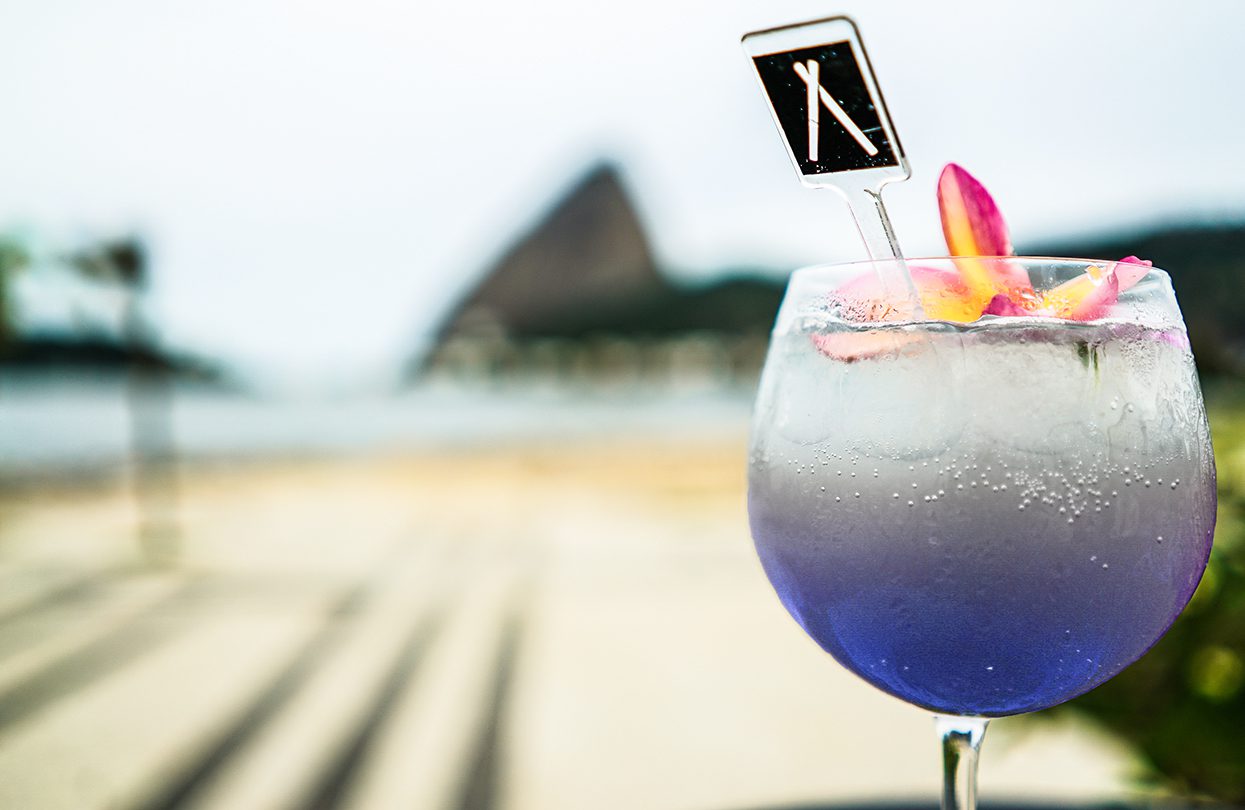
One of the refreshing drinks at Assador Rio’s
Mangueira, founded 91 years ago, is one of Rio’s top 14 samba schools. Despite the name, samba schools are not technically schools; rather they are large performance groups made up of dancers, musicians, choreographers, and event organizers who work together all year round to create and rehearse their 75-minute performance during the Carnival parades. The parades, judged by a board of judges, aims to find the best samba school and to win is an enormous privilege.
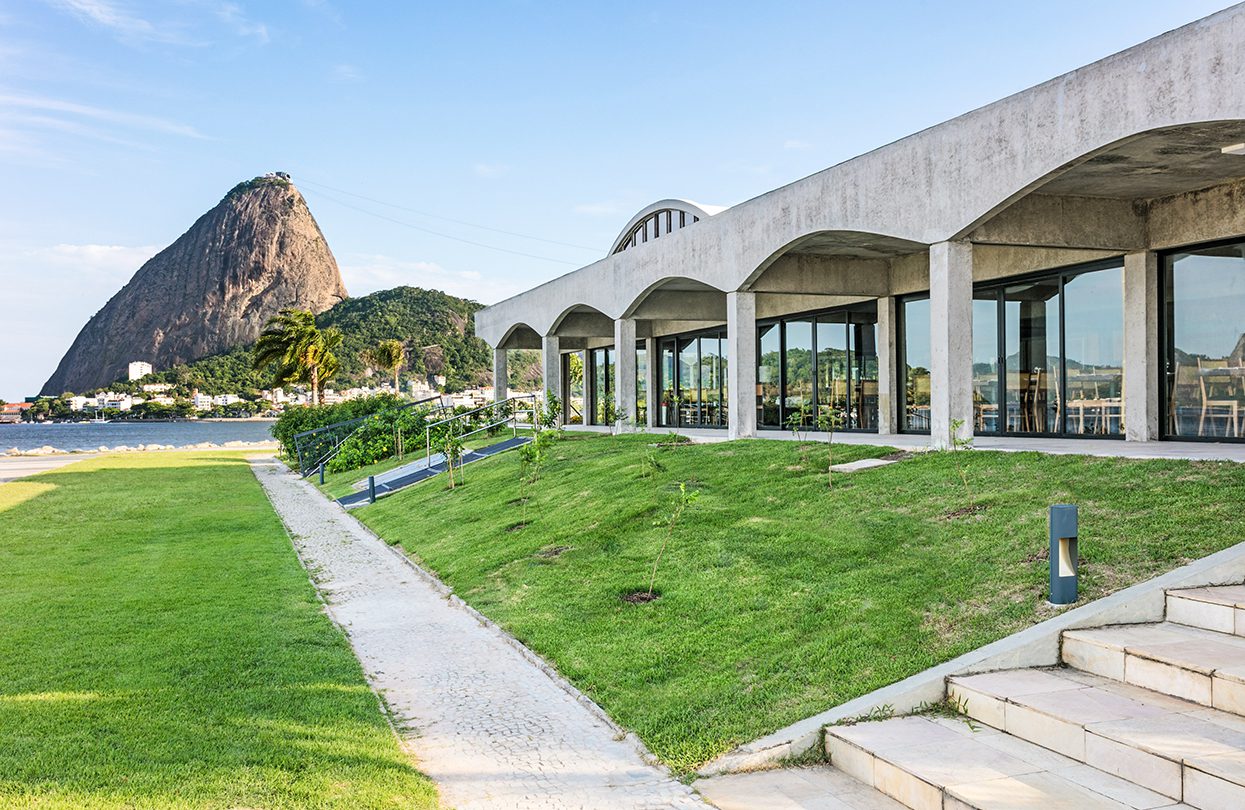
Outside Assador Rio’s
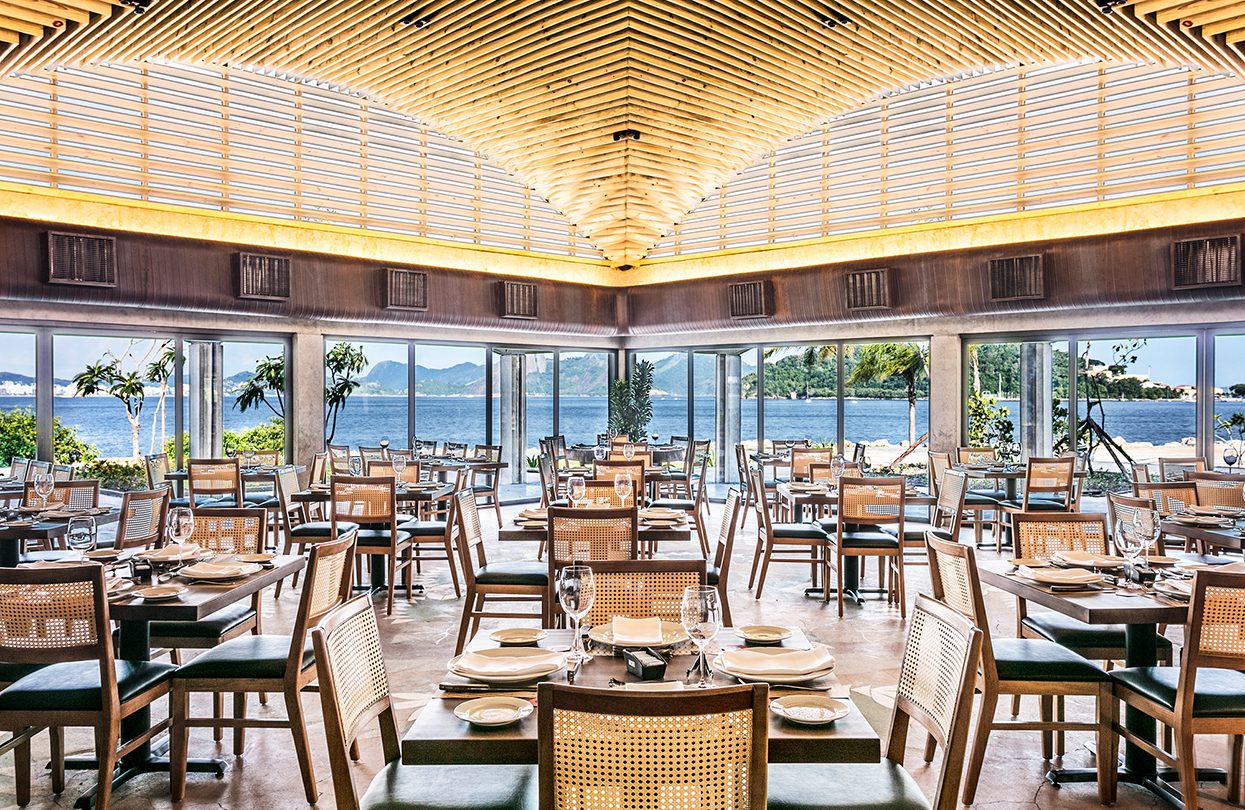
View overlooking Guanabara Bay at Assador Rio’s
“To truly understand Carnival, it’s fundamental to visit the schools and the rehearsals,” says Machado. “To meet the people, feel the beat of the Carnival drums, and see the dance of our dancers. To be on this sacred soil of samba is to feel close to its history and ancestral roots.”
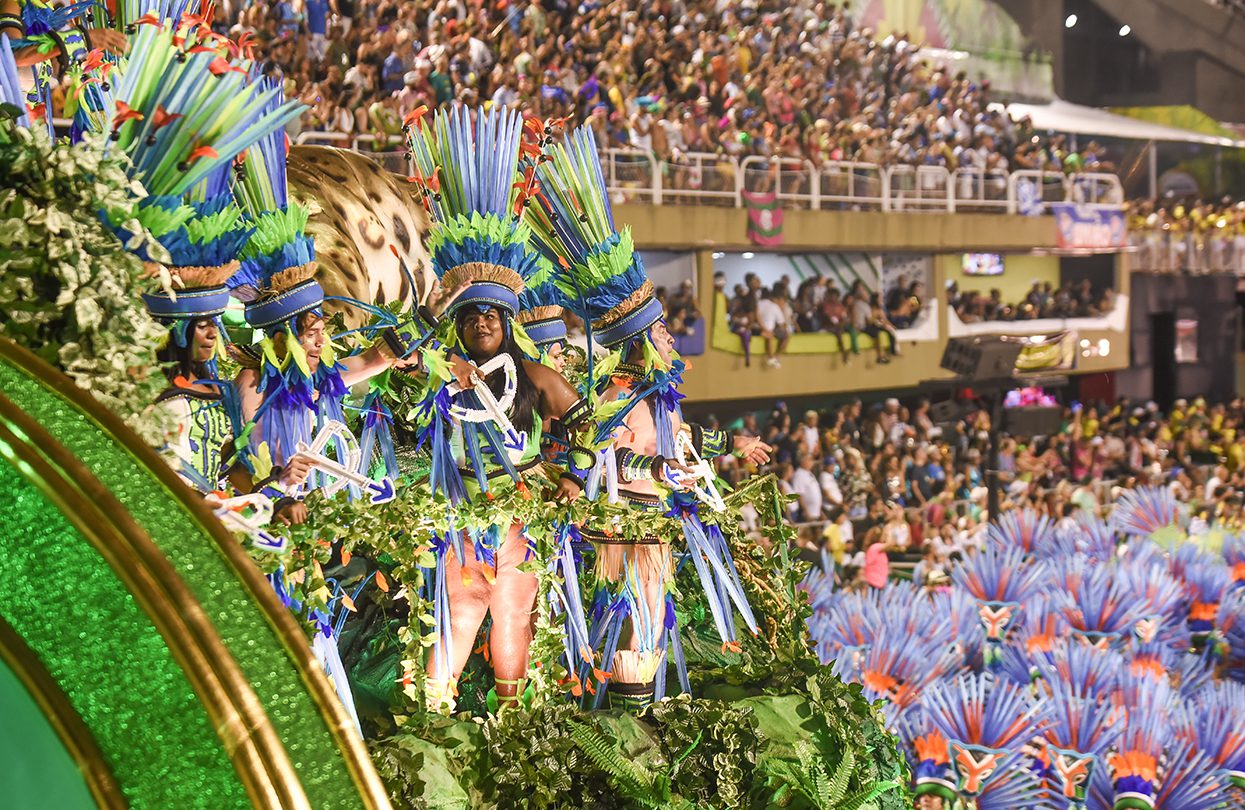
Mangueira during the Carnival parades, image by Photocarioca
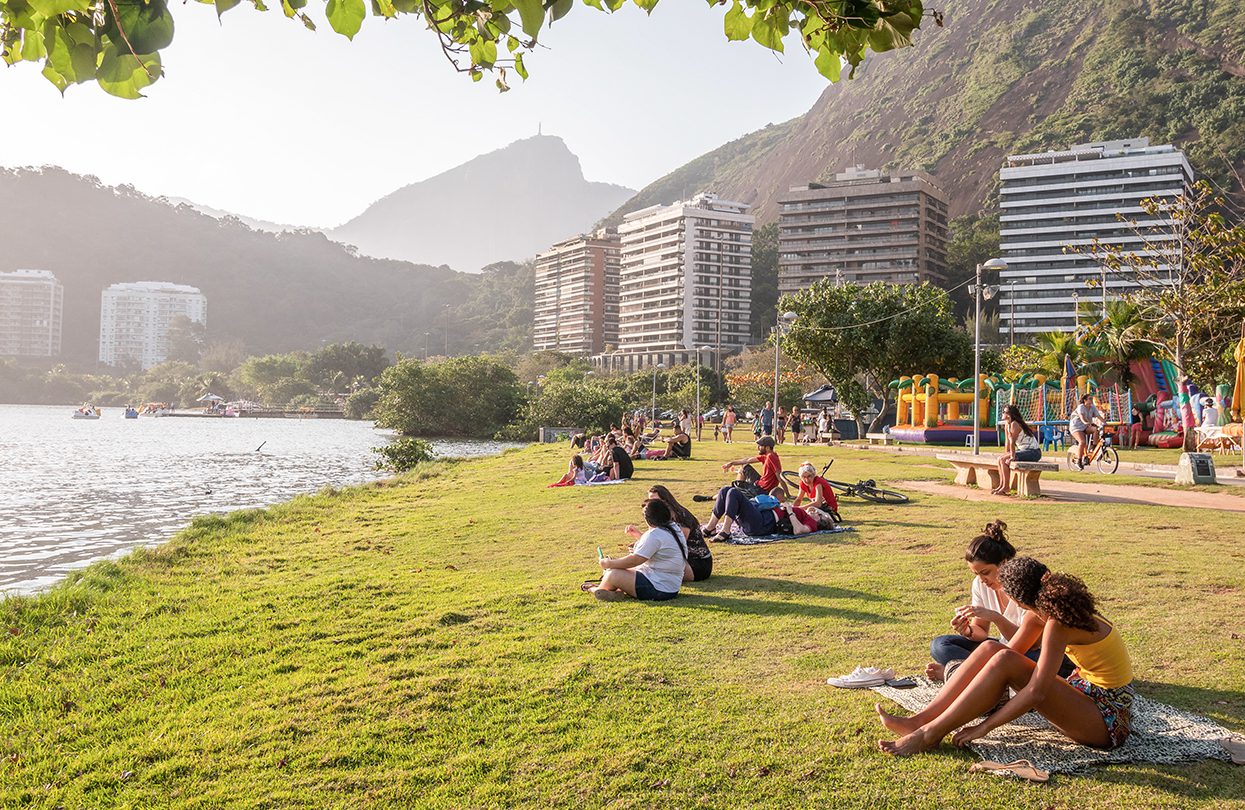
People enjoy the sun and peaceful surroundings of Lagoa Rodrigo de Freitas, photo by Joao Paulo V Tinoco
With neighbouring Argentina and (geographically) nearby Chile, it’s easy to overlook just how good Brazilian wines can be. You can sample one of Rio’s greatest, secret joys – a Brazilian wine paired with a selection of locally-produced cheese. One of the best places to try it is at Canastra Rose, a two-storey bar decorated with mismatched period furniture, palm trees, and low lighting, giving it a tropical vibe so distinctly Rio.
One of the best ways to end the day in Rio is watching one of its spectacular sunsets. You’re spoilt for choice when it comes to viewpoints. You can watch it from the beach in Arpoador or, for the adventurous, at the top of the DoisIrmãos hills before heading to Bar da Laje at the top of the Vidigal favela for cocktails and panoramic views.

The spot we love is at Lagoa, a picturesque lake in the South Zone of Rio circled by Ipanema, Copacabana, and Jardim Botanico and framed by a mountainous skyline. Take a seat at PalaphitaLagoa, a rustic bar made from polished logs with outdoor seating of low sofas and natural wood tables and fairy lights that glitter in the trees. Even with the evening runners, skateboarders, families strolling around the lake, and the occasional capybara grazing on the grass, the air is filled with peace and tranquillity. The show truly begins when the sun goes down across the lake and fills the sky with shades of dazzling orange, glowing peach, and rich blue. Right then, you’ll feel the same as the millions of visitors and locals have already felt – that Rio truly is a city unlike any other. 
Where to stay:
Subscribe to the latest edition now by clicking here.
© This article was first published in Dec-Jan 2020 edition of World Travel Magazine.
If you would like to comment on this story or anything else you have seen on World Travel Magazine, head over to our Facebook page or message us on Twitter.
And if you liked this story, subscribe to our bi-monthly World Travel Magazine, a handpicked selection of editorial features and stories from Global Destinations, Inspire Me, Insider, Style File, Wellness & Travel, City Travel, Suite Life, At Leisure, Short Breaks and much more.


